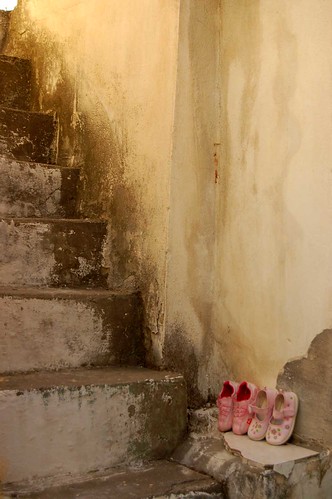Wednesday, April 18, 2007
Thursday, April 12, 2007
jp - art history analysis paper
Works Cited
A Painting, Sculpture, or Photograph
Include the artist's name, the year the work was created, and the institution (e.g., a gallery or museum) that houses it, follwed by the city where it is located.
Goya, Francisco. The Family of Charles IV. 1800. Museo del Prado, Madrid.
Note that the title is in italics, as it should be in your paper.
you can go here for more help on works cited...
don't forget to proofread! read it out loud to make sure it makes sense.
2 ways to organize your paper...
* “Lumping” involves discussing all details of one work, and then all details of the second work. This method is preferred in lengthy or broad comparisons to avoid zipping back and forth between the works too quickly. Remember to compare the two works by referring back to the first work when discussing the second. This will ensure that you don’t simply write two descriptions.
* “Splitting” involves discussing a particular point in both works before moving on to another point. This method is preferred in comparisons dealing with fine details instead of a broader look at each work as a whole. Remember to discuss each point evenly to maintain a clear, parallel structure.
A Painting, Sculpture, or Photograph
Include the artist's name, the year the work was created, and the institution (e.g., a gallery or museum) that houses it, follwed by the city where it is located.
Goya, Francisco. The Family of Charles IV. 1800. Museo del Prado, Madrid.
Note that the title is in italics, as it should be in your paper.
you can go here for more help on works cited...
don't forget to proofread! read it out loud to make sure it makes sense.
2 ways to organize your paper...
* “Lumping” involves discussing all details of one work, and then all details of the second work. This method is preferred in lengthy or broad comparisons to avoid zipping back and forth between the works too quickly. Remember to compare the two works by referring back to the first work when discussing the second. This will ensure that you don’t simply write two descriptions.
* “Splitting” involves discussing a particular point in both works before moving on to another point. This method is preferred in comparisons dealing with fine details instead of a broader look at each work as a whole. Remember to discuss each point evenly to maintain a clear, parallel structure.
Sunday, April 8, 2007
Design Fundamentals
Sketchbook
Due: April 9th
1. Get a mirror and a candle. Draw a self portrait by candle light. Pay attention to how the light source is affecting the subject matter. Your drawing should touch at least 3 edges of the page, pay attention to detail and value.
2. Find a chair, stool, or step ladder. Draw the NEGATIVE space. Meaning, draw only the shapes of the space AROUND the chair. Fill in your negative space. Draw large and fill up the entire page.
3. Now, draw the same chair, stool or step ladder, but draw the actual object, and pay attention to the detail of the shapes, values, textures and details. Your drawing should touch at least 3 edges of the page.
Painting Sketchbook
Due: April 9th
1. Stand up next to a table. Put your sketchbook on the table, look down onto your foot/feet. Draw exactly what you see, draw exactly what you see. Pay close attention to detail and proportions.
2. Set up a still life of 3-5 objects you would find in your bathroom. Set up one source of light, draw exactly what you see, take your time, pay attention to detail, light source, and proportions.
3. A drawing of something from direct observation.
4. If you could paint anything you wanted, what would it be? Any subject matter or style... draw a well thought out and well developed composition. Add color.
Sketchbook
Due: April 9th
1. Get a mirror and a candle. Draw a self portrait by candle light. Pay attention to how the light source is affecting the subject matter. Your drawing should touch at least 3 edges of the page, pay attention to detail and value.
2. Find a chair, stool, or step ladder. Draw the NEGATIVE space. Meaning, draw only the shapes of the space AROUND the chair. Fill in your negative space. Draw large and fill up the entire page.
3. Now, draw the same chair, stool or step ladder, but draw the actual object, and pay attention to the detail of the shapes, values, textures and details. Your drawing should touch at least 3 edges of the page.
Painting Sketchbook
Due: April 9th
1. Stand up next to a table. Put your sketchbook on the table, look down onto your foot/feet. Draw exactly what you see, draw exactly what you see. Pay close attention to detail and proportions.
2. Set up a still life of 3-5 objects you would find in your bathroom. Set up one source of light, draw exactly what you see, take your time, pay attention to detail, light source, and proportions.
3. A drawing of something from direct observation.
4. If you could paint anything you wanted, what would it be? Any subject matter or style... draw a well thought out and well developed composition. Add color.
Tuesday, April 3, 2007
Subscribe to:
Comments (Atom)


